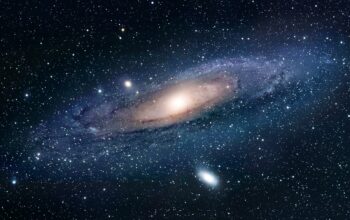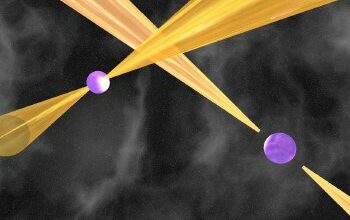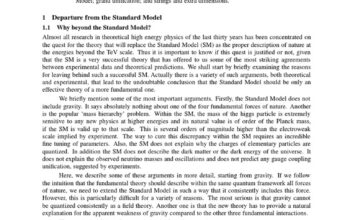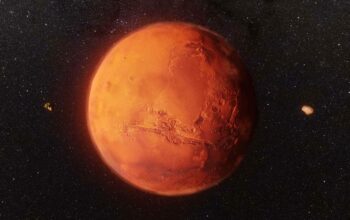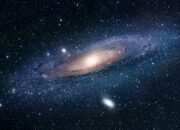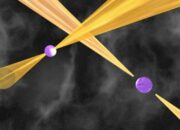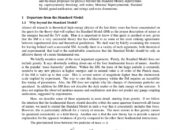Quasars, the luminous corpses of primordial black holes, have long fascinated astrophysicists and cosmologists alike. As some of the most exuberant objects in the universe, quasars emit incredible amounts of energy, often outshining entire galaxies. A recent resurgence of interest in quasar shock phenomena promises to reshape our understanding of their prevalence and role in cosmic evolution. This exploration not only magnifies the significance of quasars but also propels us toward a paradigm shift in how we perceive the universe’s most enigmatic entities.
Historically, quasars were thought to be rare, isolated beacons dominating the universe’s skyline during its formative eons. However, with advancements in observational technology and methodologies, it has become increasingly evident that these luminous phenomena may be more ubiquitous than previously surmised. The serendipitous discovery of quasar shock waves—phenomena resulting from the interaction of energetic outflows from supermassive black holes with surrounding gas—has spurred investigation into their characteristics and implications.
The genesis of quasar shocks is predicated upon the energetic dynamics of accreting black holes. As matter spirals into a black hole, it becomes exceedingly hot due to immense gravitational forces, emitting powerful radiation across the electromagnetic spectrum. Surrounding gas clouds can be compressed, heated, and accelerated, generating shock waves that propagate into the interstellar medium. These events are not merely localized; they can influence star formation processes and feedback mechanisms on galactic scales.
One pivotal characteristic of quasar shock waves is their ability to affect the baryonic matter in their vicinity. Baryonic matter, primarily composed of protons and neutrons, constitutes the ordinary matter of the universe, forming stars, planets, and other celestial bodies. The interaction of a quasar shock with surrounding gas can lead to elevated temperatures, potentially igniting new star formation or, conversely, inhibiting it through feedback mechanisms. This duality underscores the complexity of quasar interactions with their environments, heralding a need for deeper investigation into how such phenomena can modulate galactic evolution.
Recent empirical evidence suggests that quasar shocks may not be unique to a select cadre of hyper-luminous quasars, as initially hypothesized. Instead, lower-luminosity quasars, traditionally overlooked, may also manifest quasar shock characteristics. This broadens the scope of quasars and indicates that our understanding of their distribution is fundamentally incomplete. The implications of this revelation are multifaceted: if lower-luminosity quasars are indeed widespread, they may play an essential role in the cosmic ecology, influencing the thermal state of intergalactic gas and the manner in which galaxies coalesce.
Moreover, this paradigm shift has ramifications that extend beyond the immediate interactions involved in quasar shocks. The feedback mechanisms engendered by these events may elucidate the mysterious correlation between supermassive black holes and galaxy formation. With the discovery that quasars can induce significant cosmic consequences through shock dynamics, it presents an avenue for understanding the enigmatic M-sigma relation, which posits a relationship between the mass of a supermassive black hole and the stellar velocity dispersion of its host galaxy. The realization that quasar shocks can influence star formation and galactic morphology propels the study of galaxy evolution into novel territories.
The burgeoning field of quasar shock research presents an expansive array of opportunities for future inquiry. Observatories equipped with next-generation telescopes, such as the James Webb Space Telescope, will unveil new aspects of quasar behavior and their interactions with the milieu of space. Hypothetical models can now be iteratively refined, incorporating quasar shock dynamics alongside ongoing galactic formations and mergers. The confluence of these factors can be expected to enhance our grasp of cosmological structure formation throughout the epochs of the universe.
In the broader context of astrophysics, the implications of widespread quasar shocks also beckon a profound reevaluation of the narrative surrounding cosmic evolution. As we accumulate more data, we may find ourselves on the cusp of an epoch-defining insight into the role quasars play not only as extrinsic markers of the universe’s history but as intrinsic shapers of the cosmos. This can catalyze a resurgence in theoretical and observational research, galvanizing the scientific community to tackle the deeper questions that arise from these phenomena.
Ultimately, the realization that quasar shocks may be more common than previously believed serves as a potent reminder of the vastness of the universe and our still-limited comprehension of its intricacies. As we peer deeper into the cosmos and appreciate the interconnectedness of these bizarre beacons, our curiosity is aroused, urging us to continue this exploration. Each discovery reshapes our understanding, lending credence to the adage that the universe is indeed stranger than we can imagine. By fostering a spirit of inquiry and elevating our perspectives on quasar dynamics, we stand at the precipice of significant revelations that promise to redefine not only the study of quasars but the very fabric of cosmological understanding.



